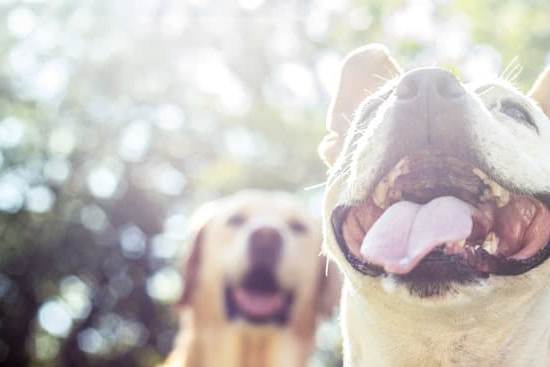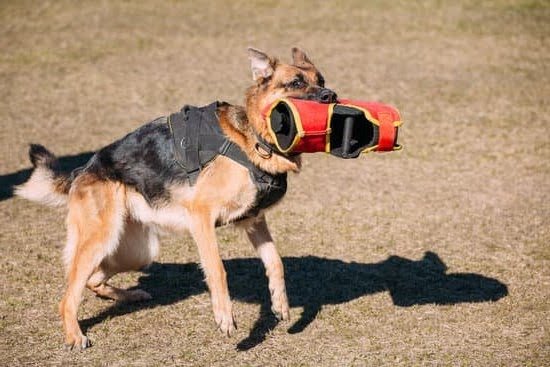Training your dog to ride in the car is an essential skill for any pet owner. Whether you’re planning a road trip, visiting the veterinarian, or simply taking your furry friend on errands, a well-behaved and comfortable dog in the car can make all the difference.
In this article, we will explore step-by-step methods to teach your dog to feel at ease during car rides, overcome fear or anxiety, and exhibit good behavior while on the go.
Many dogs initially experience fear or anxiety when it comes to car rides. This may be due to past negative experiences, unfamiliar surroundings, motion sickness, or simply a lack of exposure. Whatever the cause may be, it is important to understand that training your dog to ride in the car is not only for their comfort but also for their safety and the safety of other passengers.
Our step-by-step guide aims to create a positive association with car rides by gradually introducing your dog to the vehicle, using positive reinforcement techniques. We will cover preparing the car for your dog’s comfort and safety, introducing them to the car in a non-threatening environment, and taking short trips with positive reinforcement.
Additionally, we will address teaching basic commands such as entering and exiting calmly, staying in one position during rides, and preventing jumping or barking inside the car.
By following these training methods and tips provided within this article, you can help your dog overcome their initial fear or anxiety towards riding in the car. Ultimately, our goal is for you and your four-legged companion to enjoy stress-free journeys together while ensuring their safety at all times. So let’s get started with creating a positive experience for your beloved pet when it comes to riding in the car.
Understanding Your Dog’s Initial Fear or Anxiety towards Car Rides
Many dogs experience fear or anxiety when it comes to car rides. This can be due to various reasons such as past traumatic experiences, motion sickness, or a lack of exposure and socialization during puppyhood. It is important for dog owners to understand and address these fears in order to create a positive association with car rides.
Identifying the Signs of Fear or Anxiety
The first step in understanding your dog’s fear or anxiety towards car rides is to be able to recognize the signs. These can vary from dog to dog but may include panting, drooling, trembling, whining, pacing, restlessness, attempting to escape the car, or even aggressive behavior. It is important to observe your dog’s body language and behavior during car rides to determine if they are experiencing fear or anxiety.
Addressing the Fear or Anxiety Through Desensitization
Once you have identified that your dog is fearful or anxious about car rides, it is time to start addressing these issues through desensitization training. The goal of this training is to gradually expose your dog to the car and create positive associations with it.
This can be achieved by following the step-by-step guide outlined in this article which includes preparing the car for your dog’s comfort and safety, introducing them slowly in a non-threatening environment, and gradually increasing exposure through short trips with positive reinforcement.
Seeking Professional Help if Needed
If your dog’s fear or anxiety towards car rides persists despite your efforts, it may be beneficial to seek professional help from a certified dog trainer or behaviorist. They can provide guidance and techniques specifically tailored for your dog’s needs. Additionally, they can rule out any underlying medical conditions that may be contributing to their fear or anxiety.
Understanding and addressing your dog’s initial fear or anxiety towards car rides is crucial for both their well-being and yours as a dog owner. By taking the time to desensitize your dog and create positive associations with the car, you can help them overcome their fears and ensure stress-free and enjoyable car rides for the entire family.
Step-by-Step Guide
Creating a positive association with the car is crucial when training your dog to ride in the car. By following these step-by-step guidelines, you can help your furry friend overcome any fear or anxiety they may have towards car rides and make it an enjoyable experience for both of you.
First, it’s important to prepare the car for your dog’s comfort and safety. Make sure the vehicle is clean and free of any hazards. Place a comfortable bed or blanket in the backseat or cargo area where your dog will be riding. Additionally, consider using seat covers to protect your car’s upholstery from dirt and fur.
Next, introduce your dog to the car in a non-threatening environment. Start by simply having them near the parked car without actually getting inside. Allow them to explore and sniff around while offering praise and treats for their calm behavior. Repeat this process several times until your dog feels relaxed and comfortable being near the car.
Once your dog has become familiar with being near the car, it’s time to take short trips with positive reinforcement. Start by going on brief drives around the block or to places that are not too far away. Use treats or toys as rewards for good behavior during these trips, such as remaining calm and sitting still. Gradually increase the duration of each trip as your dog becomes more comfortable.
By gradually exposing your dog to the car in a positive way, you can help them develop a positive association with riding in a vehicle. Remember to be patient and understanding throughout this process, as each dog may progress at their own pace. With consistency and persistence, you will be able to enjoy stress-free car rides together.
| Step | Description |
|---|---|
| 1 | Preparing the Car for Your Dog’s Comfort and Safety |
| 2 | Introducing Your Dog to the Car in a Non-Threatening Environment |
| 3 | Gradual Exposure: Taking Short Trips with Positive Reinforcement |
Teaching Basic Commands to Ensure a Safe and Pleasant Car Ride
To ensure a safe and pleasant car ride with your dog, it is important to teach them basic commands that will help them behave appropriately inside the car. This section will provide a step-by-step guide on teaching your dog these essential commands.
The first command you should focus on is teaching your dog to enter and exit the car calmly. Start by rewarding your dog for showing interest in the car, whether it’s sniffing around or approaching it. Once they are comfortable being near the car, you can begin introducing the cue word or gesture that you want to use for entering and exiting.
For example, you can use “load up” or a hand signal like pointing towards the car door. Gradually increase their exposure to actually getting in and out of the car, providing treats and praise for calm behavior.
The next command is teaching your dog to stay in one position during the ride. This is important for both safety reasons and preventing distractions while driving. Begin by having your dog sit or lie down in their designated spot such as a crate or a specific seat.
Use treats and positive reinforcement to encourage them to stay in that position while the car is stationary. As they become more comfortable, start practicing short trips around the block while reinforcing their good behavior with rewards.
Lastly, it’s crucial to teach your dog not to jump or bark when inside the car. These behaviors can be distracting for both you as the driver and other passengers if there are any. Using positive reinforcement, reward your dog for remaining calm and quiet during car rides. If they do exhibit these unwanted behaviors, redirect their attention to a more appropriate action such as sitting or lying down.
By teaching these basic commands, you can ensure that your dog behaves well during car rides, making it safer and more enjoyable for everyone involved.
| Command | Description |
|---|---|
| Enter and Exit Calmly | Teach your dog to enter and exit the car in a calm manner. Use a cue word or gesture and gradually increase exposure. |
| Stay in One Position | Encourage your dog to stay in one position during the ride, such as sitting or lying down. Start with short trips and reinforce good behavior. |
| No Jumping or Barking | Train your dog not to jump or bark inside the car. Redirect their attention and reward calm behavior instead. |
Handling Motion Sickness and Car Anxiety in Dogs
Motion sickness and car anxiety can be common issues that many dogs experience when riding in the car. It’s important to identify the signs of these conditions in order to address them effectively and ensure a pleasant car ride for your furry friend.
Identifying the Signs of Motion Sickness or Anxiety in Your Dog
Before you can help your dog overcome motion sickness or anxiety, it’s crucial to recognize the signs that they are displaying. Some common symptoms of motion sickness in dogs include drooling, excessive panting, vomiting or dry heaving, whining, restlessness, yawning, and trembling. On the other hand, signs of anxiety during car rides may manifest as panting, pacing, shaking, barking excessively, trying to escape from the car or crate, or even aggressive behavior.
Tips to Prevent Motion Sickness and Reduce Anxiety
Once you’ve identified that your dog is experiencing motion sickness or anxiety in the car, there are several steps you can take to alleviate their discomfort:
- Gradual exposure: Start by introducing your dog to short trips in the car and gradually increasing the duration over time. This will help them become more accustomed to the motion and reduce their anxiety.
- Proper ventilation: Ensure that your car is well-ventilated by opening windows slightly or using air conditioning. A stuffy environment can exacerbate motion sickness symptoms.
- No feeding before rides: Avoid feeding your dog at least a few hours before getting in the car. A full stomach can contribute to nausea and discomfort.
- Keep them facing forward: Dogs are less likely to experience motion sickness if they face forward during car rides. If possible, use a specially designed safety harness that attaches to your vehicle’s seatbelt and allows your dog some mobility while still keeping them securely in place.
- Medications and natural remedies: If all else fails, consult with your veterinarian about potential medications or natural remedies that can help alleviate motion sickness or anxiety. They may recommend anti-nausea medication or calming supplements that can make car rides more enjoyable for your dog.
By implementing these tips and being patient with your dog, you can help them overcome motion sickness or anxiety and ensure a more comfortable and enjoyable car ride experience. Remember to always prioritize the well-being and safety of your furry companion when traveling together.
Safety Measures
Securing your dog in the car is crucial for their safety and the safety of everyone in the vehicle. There are several restraint options available, including harnesses, crates, and seat belts. Choosing the right option depends on your dog’s size, behavior, and comfort level.
A harness is a popular choice as it allows for maximum mobility while still keeping your dog secure. It should be specifically designed for use in vehicles and have a sturdy attachment point that can be secured to the seat belt. The harness should fit snugly but not restrict movement or cause discomfort to your dog.
Crates are another safe option for securing your dog in the car. They provide a designated space for your dog and prevent them from roaming around or becoming a distraction to the driver. Make sure the crate is appropriately sized for your dog, with enough room for them to stand, turn around, and lie down comfortably. It’s essential to secure the crate in place using straps or other restraints to prevent it from moving during sudden stops or accidents.
Seat belts designed for dogs are also available and are an excellent option for restraining smaller dogs. These seat belts attach to your vehicle’s seat belt system and allow your dog a limited range of motion while ensuring their safety during car rides.
No matter which restraint option you choose, it’s crucial to properly install and adjust them for maximum safety. Follow the manufacturer’s instructions carefully and regularly check that all connections are secure before each car ride.
Remember that securing your dog in the car not only protects them but also minimizes distractions that could lead to accidents on the road. By taking these safety measures, you can enjoy stress-free car rides with your well-trained dog knowing they are safe and secure throughout the journey.
Troubleshooting Common Challenges during Car Training
One of the most common challenges when training a dog to ride in the car is dealing with resistance. It is not uncommon for dogs to exhibit fear or opposition towards getting into the car, especially if they have had a negative experience in the past. However, with patience and the right approach, you can help your dog overcome their fear and make car rides a positive experience.
To start, it is important to create a calm and relaxed environment around the car. Avoid displaying any signs of anxiety or frustration as this can transfer onto your dog. Instead, try using treats and positive reinforcement to gradually build your dog’s confidence around the car. Begin by allowing your dog to explore the car at their own pace without forcing them inside. This will help them associate the car with positive experiences.
If your dog continues to resist getting into the car, consider using a favorite toy or blanket that they associate with comfort and security. Placing these items inside the car can help alleviate some of their anxiety. You can also try feeding your dog their meals near or inside the car to create positive associations.
Another technique is desensitization, which involves exposing your dog to elements of car rides in a controlled and gradual manner. Start by simply sitting in the parked vehicle with your dog for short periods of time, gradually increasing these sessions over time. Once they are comfortable with this step, move on to turning on the engine without going anywhere. Eventually, work up to taking short trips around the block before gradually extending the duration.
It is important to remember that overcoming resistance takes time and patience. If necessary, seek guidance from a professional trainer or behaviorist who can provide specialized guidance tailored to your dog’s needs and personality. With consistency and positive reinforcement, you can help your furry friend overcome their fear of riding in cars and create enjoyable experiences for both of you.
Maintaining Car Etiquette
When it comes to training your dog to ride in the car, it’s not just about getting them comfortable and safe during the journey. It’s also important to ensure that they exhibit good behavior and follow car etiquette. This section will provide you with some valuable tips on how to maintain well-behaved canine passengers during car rides.
Encouraging Your Dog to Be Calm and Patient during Car Waiting Times
It is not uncommon for dogs to become anxious or excited while waiting in the car, especially if they are anticipating a fun outing or an arrival at their favorite park. However, it is important to teach your dog to be calm and patient during these times. One effective technique is to practice “wait” or “stay” commands while the car is stationary.
Start by opening the door but not allowing your dog to jump out until you give them permission. Gradually increase the duration of the wait time before allowing them out of the car. Providing praise and treats for remaining calm will reinforce this behavior.
Preventing Your Dog from Distractions that May Compromise Safety
While dogs may enjoy sticking their head out of the window or trying to catch glimpses of passing cars, it is essential to prevent any distractions that could compromise safety. This includes keeping windows closed or cracked open just enough for ventilation, using pet-specific seat covers, and ensuring they are securely restrained in their designated area within the vehicle.
Additionally, avoid letting your dog have free reign in the car by confining them using a crate or harness system designed specifically for car travel.
Creating a comfortable space for your dog can also help reduce distractions and promote proper behavior during car rides. Provide familiar items such as their bed or favorite blanket, toys, and treats to keep them occupied. It may also help to play relaxing music or use calming sprays or pheromones that can help alleviate stress and anxiety.
By following these tips for maintaining car etiquette, you can ensure your dog remains calm and well-behaved during car rides. Remember to be patient and consistent with your training, as it may take time for your dog to fully adjust to the expectations you’ve set. With practice and positive reinforcement, you and your furry friend can enjoy stress-free car rides together.
Conclusion
In conclusion, training your dog to ride in the car is important for their safety and your peace of mind. By understanding your dog’s initial fear or anxiety towards car rides and following a step-by-step guide, you can create a positive association with the car and make it a pleasant experience for your furry friend.
Start by preparing the car for your dog’s comfort and safety, ensuring that they have a cozy spot and are secured properly. Introduce your dog to the car in a non-threatening environment and gradually expose them to short trips with positive reinforcement. Teaching basic commands such as entering and exiting the car calmly, staying in one position during the ride, and not jumping or barking will also help ensure a safe and pleasant experience.
If your dog experiences motion sickness or anxiety during car rides, it is important to identify the signs and take steps to prevent or reduce these issues. Choosing the right restraint option for your dog, such as a harness, crate, or seat belt, is crucial for their safety. Make sure to properly install and adjust restraints for maximum effectiveness.
Throughout the process of training your dog to ride in the car, you may encounter some common challenges such as resistance, persistent carsickness or anxiety, or aggressive or destructive behaviors. It is important to address these issues with patience and consistency. Seek guidance from professionals if needed.
Lastly, maintaining proper car etiquette is essential for well-behaved canine passengers. Encourage your dog to be calm and patient during waiting times in the car and prevent them from being distracted by toys or other stimuli that may compromise safety.
By following these steps and guidelines, you can enjoy stress-free car rides with your well-trained dog. The time invested in training will pay off not only in ensuring their safety but also in creating incredible memories together on road trips or visits to the vet. Happy travels.
Frequently Asked Questions
Can you train a dog to ride in a car?
Yes, it is definitely possible to train a dog to ride in a car. Like any other training, it requires patience, consistency, and positive reinforcement. Start by introducing your dog to the car gradually – let them sniff around inside while it’s stationary and reward them with treats or praise for any signs of relaxation or calmness.
Once they become comfortable being in the car without it moving, you can start taking short trips around the block, gradually increasing the duration of these rides. It’s important to make these experiences positive and rewarding for your dog by using treats, toys, or verbal praise. With time and repetition, your dog will associate car travel with positive experiences and become more at ease during rides.
How do I get my dog to like riding in the car?
To help your dog like riding in the car, it’s crucial to create positive associations with this experience. Start by making the car a comfortable and inviting place for your dog by adding their favorite blanket or toy. Gradually introduce them to the car in a calm environment without actually driving anywhere – let them explore and get familiarized with this new space while offering treats or praise for relaxed behavior.
Once they seem comfortable inside the stationary car, you can slowly progress to short drives around familiar areas or even just down the driveway and back while also rewarding them for their calmness. Additionally, using other techniques such as playing soothing music or providing treats during car rides can further help your dog feel at ease.
How long does it take a dog to get used to riding in the car?
The time it takes for a dog to get used to riding in the car can vary depending on various factors such as their individual temperament and previous experiences with cars. While some dogs may adapt relatively quickly within a few days or weeks of consistent training sessions, others may require more time and patience before feeling comfortable during car rides. Remember that every dog is unique and may have different levels of sensitivity or anxiety towards certain situations.
It’s important not to rush the process but rather focus on gradual desensitization and positive reinforcement. Creating a calm and rewarding environment during car rides can help speed up the process of getting your dog used to traveling in a car.

Welcome to the blog! I am a professional dog trainer and have been working with dogs for many years. In this blog, I will be discussing various topics related to dog training, including tips, tricks, and advice. I hope you find this information helpful and informative. Thanks for reading!





